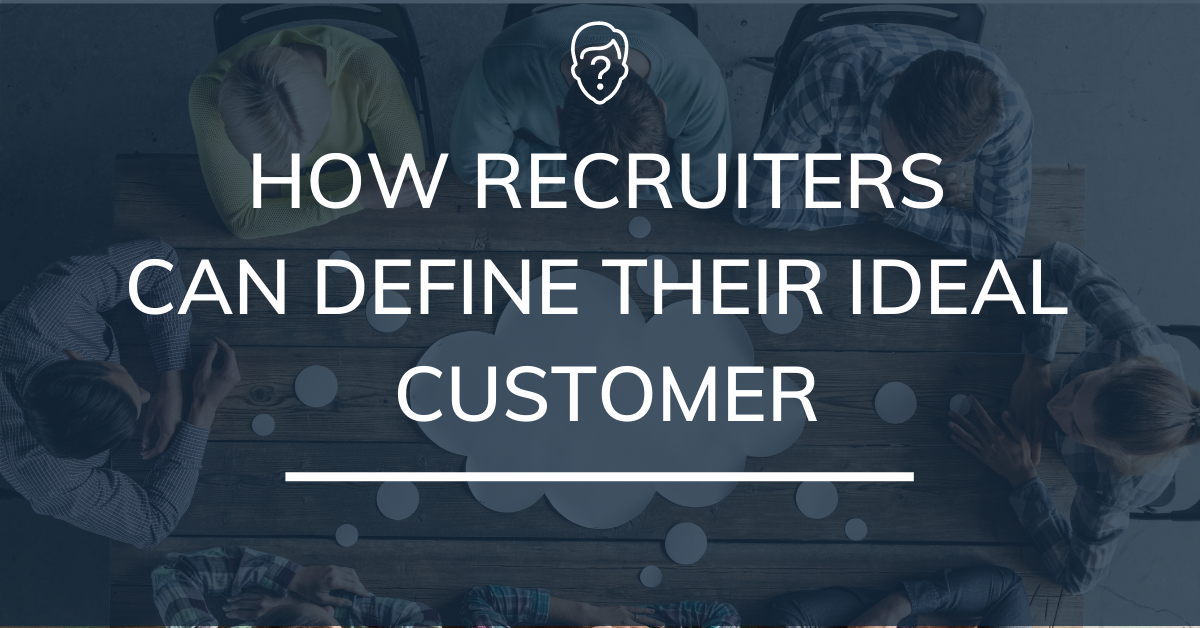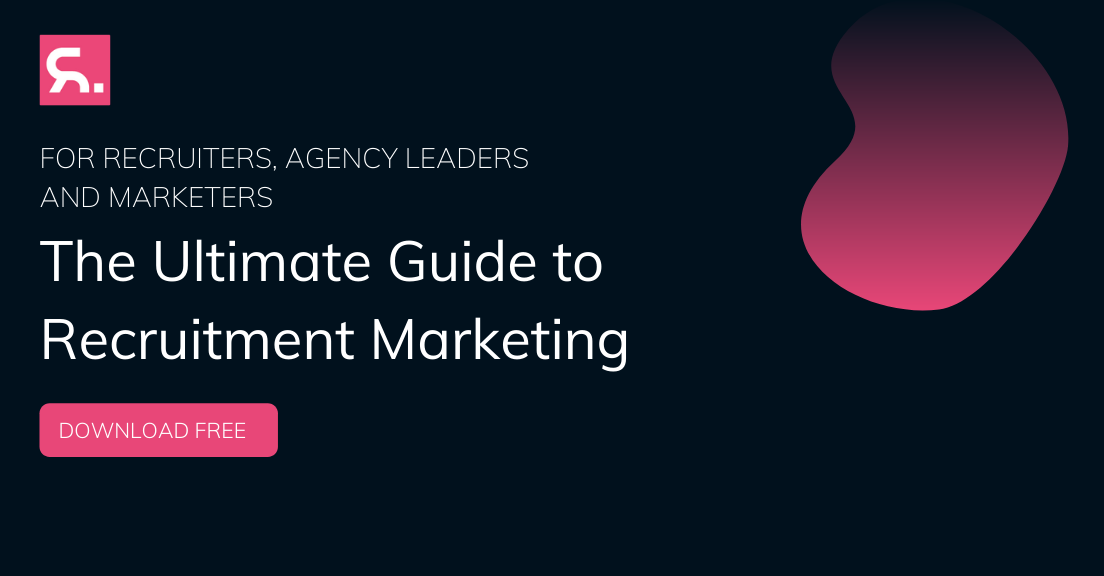Why exactly are candidate and client personas so important to running your recruitment business?
Personas help you understand your candidates and clients and what they want from you. Once you have a clearer picture of who they are, it becomes a lot easier to tailor your content, messaging, and services. What you are looking to do is to identify and then meet their specific needs, not just your own.
For example, you may know your target clients are going to need to recruit in your area at some point, but do they need to do this everyday? Any hiring manager who has put up a job ad, and certainly anyone in TA and HR know that once that ad is up, there is going to be an influx of recruiters interested in how they have been going lately.
What you need to consider is, do you know what their specific needs and interests are when they aren’t recruiting? What is the typical background of your ideal client or candidate? In order to get a clearer understanding of what makes your best clients and candidates engaged, it’s critical to develop detailed personas for your agency or your desk.
Where to start when creating a candidate or client persona
If you are new to persona’s then it is best to start small and pick just one or two. You can segment these out in time or create more but start with your core.
First of all you need to think about who it is that you or your agency need to engage with the most. Are you candidate or client heavy? Are you candidate or client light?
Once you have identified your candidate or client priority we need to break it down a little more. For example, if you are recruiting mid level marketing roles upto manager level, but you are short on jobs, then of course it’s new clients that you need. We are therefore going to create our persona on those that recruit these roles. The Senior Managers, the Head’s of and the Directors. These are the clients you need, these are the people who will need your best candidates.
Where to find information on your target persona
Use what you already have
The best personas are based on research and data. A lot of this you can dig up online but one thing to consider is your insight as an industry expert, your colleagues in the same space and your database/crm. There may well be a huge amount of information you can obtain from arranging a group session with colleagues, whiteboarding your persona or having a deep search into the crm. There may well be tonnes of information stored there from past notes, meetings, conversations and documents. Recruiters are a fountain of knowledge for their specialisms as they are talking to candidates and clients every single day. Use what they know and use what they have written down.
Ask your advocates
If you have some close candidates and clients, the ones who only come to you and sing your praises, ask them! These are professionals and most people like to share a little of what they have learnt, especially to those that they like.
Running a survey is a great way to do this as you can gain both quantitative and qualitative information and have it all neatly stored and ready to review. Setting up a survey is extremely easy now and also it is often free. Try Google Forms or Survey Monkey. Once you have set your survey up don’t be disheartened if nobody responds. People are busy and whilst happy to help they just won’t get round to it. Give them a quick call, explain you need their expertise and assuming you ask politely, your survey conversion will skyrocket. You may even pick up a job as well.
First stop for many recruiters is Linkedin, but do consider whether or not that is a platform where your clients are. It is safe to assume for this example we will find a good breadth of Senior Marketeers on Linkedin but if you are creating a persona for Construction Project Managers you may well need to look elsewhere.
Now I don’t want to cover old ground for the sake of it but a Boolean search never hurt anyone. Below I have put an example that can be used with a multitude of job types.
(director OR “head of” OR GM or “general manager” OR VP OR “vice-president” OR president)
This of course is just an example and may well need to be edited for your specialism. Once that is done, add this to key industry terms and you are good to go.
(director OR “head of” OR GM or “general manager” OR VP OR “vice-president” OR president) (marketing OR digital OR content OR graphic OR “demand generation”)
You will likely be met with thousands of results but editing ‘Geography’, ‘Employee Headcount’ and ‘Industry’ you can very quickly whittle it down to 10’s or 100’s. Also note that more complex booleans don’t always work on the free version of Linkedin.
Now we have identified who these people are, we want to learn more about them, what they want and what makes them tick. Check what they like, check what they post or check what their interests are.
Previous Research
Doing your own research is great and can be very accurate for what you need specifically but don’t underestimate what you can find online. You are almost definitely not the first person to be creating a persona on this type of group.
Hop online and see if other agencies have published detailed persona’s, check out the industry associations for this group and the businesses that offer services to them. Chances are you will find a couple of gems that may well be a huge help.
How to build your persona
Now you have access to the information, you want to start building out your persona’s. There are a number of key areas to consider and I have listed them out below. Whilst recruiting, a lot of the below are not things that should ever be considered when deciding if someone is suitable for a role. When you are creating a persona however we do need to come to some assumptions on who it is we are targeting so we can form a persona for that group. We are doing that from all the information we have previously gathered and identifying the common similarities.
Note* just because someone doesn’t fit into your persona does not mean they are not part of the group you are targeting.
Fill the Persona’s basic information
Background: Job, Career Path, Education, Family
Demographics: Male/Female/Non-Binary, Age, Income,
Identifiers: Demeanor, Communication Style
What have you learnt about this persona?
Goals: What are their key goals in their role
Challenges: What are the challenges they face achieving these goals (list as many as possible)
What we can do: What can we do to help them achieve these goals (as well as filling jobs)
Creating messaging for your persona
This is really about how you talk to your customers and how you talk about what you offer. This includes specific terminology, tone of voice and key elevator pitches about what you offer.
What you are trying to achieve here is creating a synonymous way of talking to your brand that is consistent with everybody who communicates with your persona, whether that be a content writer or a recruiter.
Consider the key terms and elevator pitch that you want to consistently be delivered to this group, write them down, refine them and then ensure everybody knows them.
Tone of voice is really talking about style. Is this a group that responds well to more personal/casual interaction or do you want to be very formal in your messaging etc.
How can candidate and client personas be used in marketing?
Once you have developed your personas it allows you to then start creating your content around them. Now you know more about who it is you are trying to engage you can adapt your approach in order to generate much better and repeat engagement.
Depending on how you are targeting this audience, you can then begin to segment your persona down if you think a piece of content will really hit home with some but not all.
For example, instead of sending the same nurturing emails to everyone in your database, you can segment your personas and tailor your content to each one. The core of the content may be the same but the messaging may not. This seems pretty simple but as people are always trying to save time they often take a one size fits all approach which leads to their content being labelled spam and detracts from the engagement you get on your follow ups.
The best time to get started is now. Check out this free customer persona template from hubspot you can use to bring together your thoughts and ideas!





